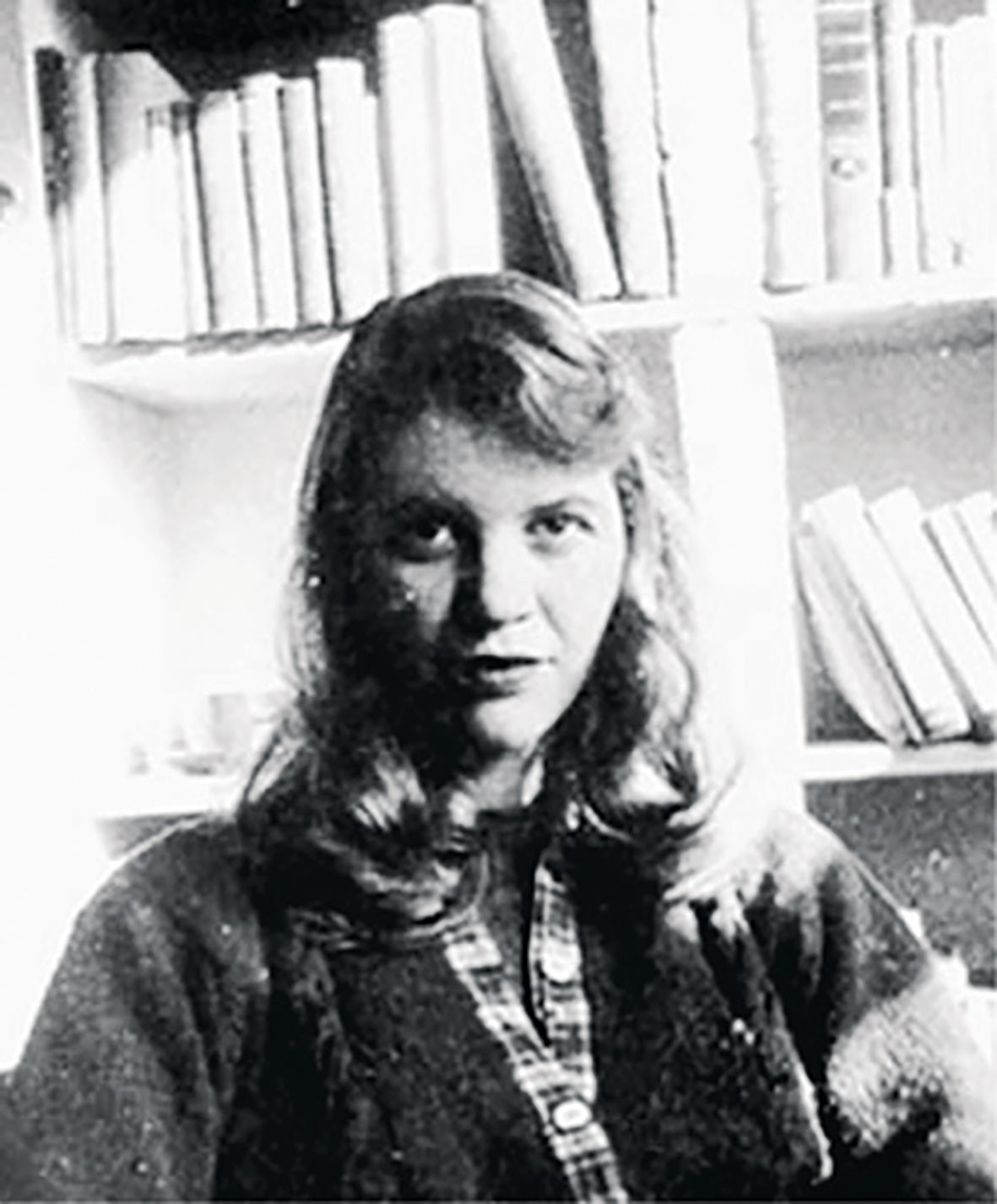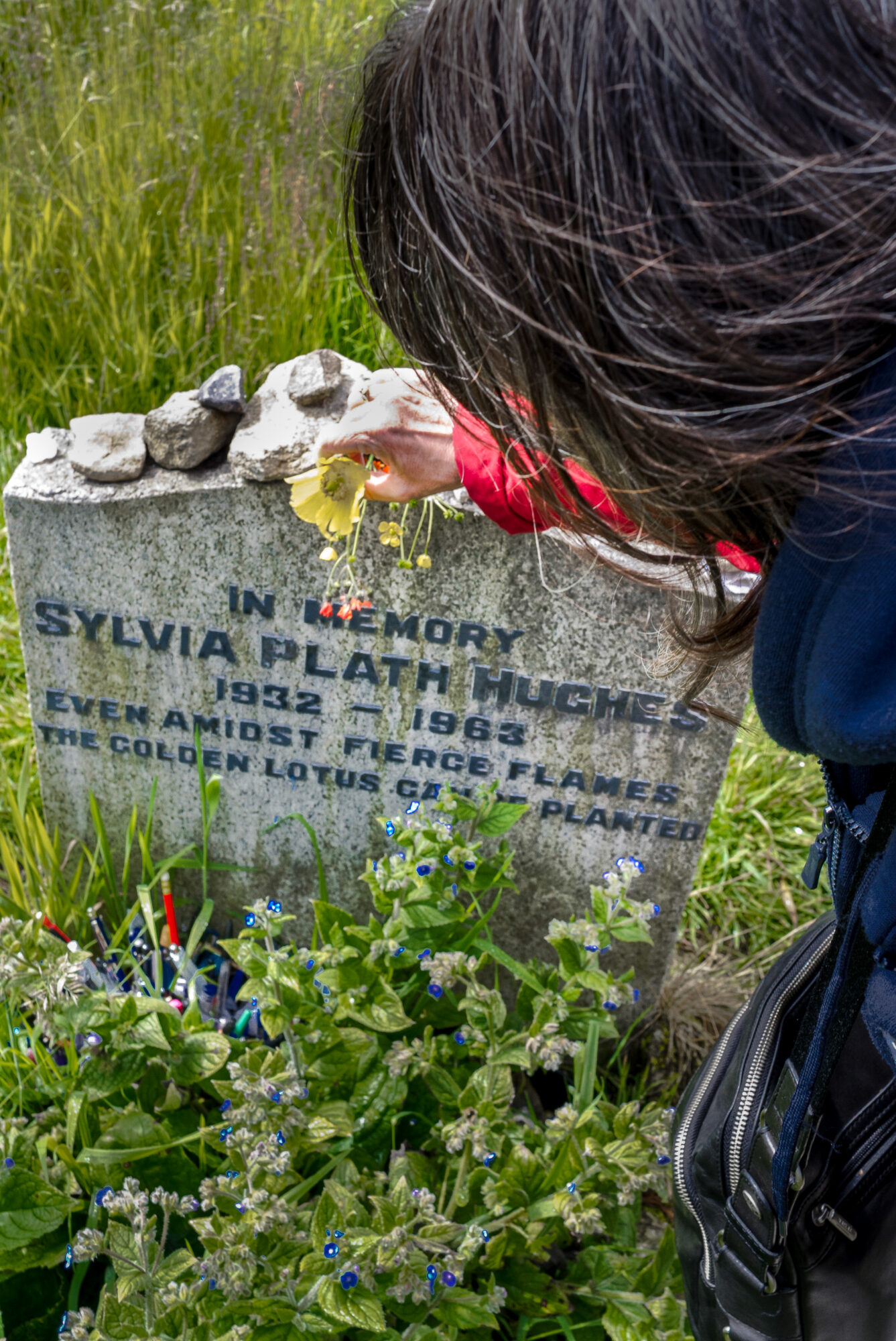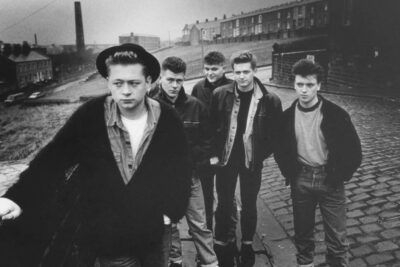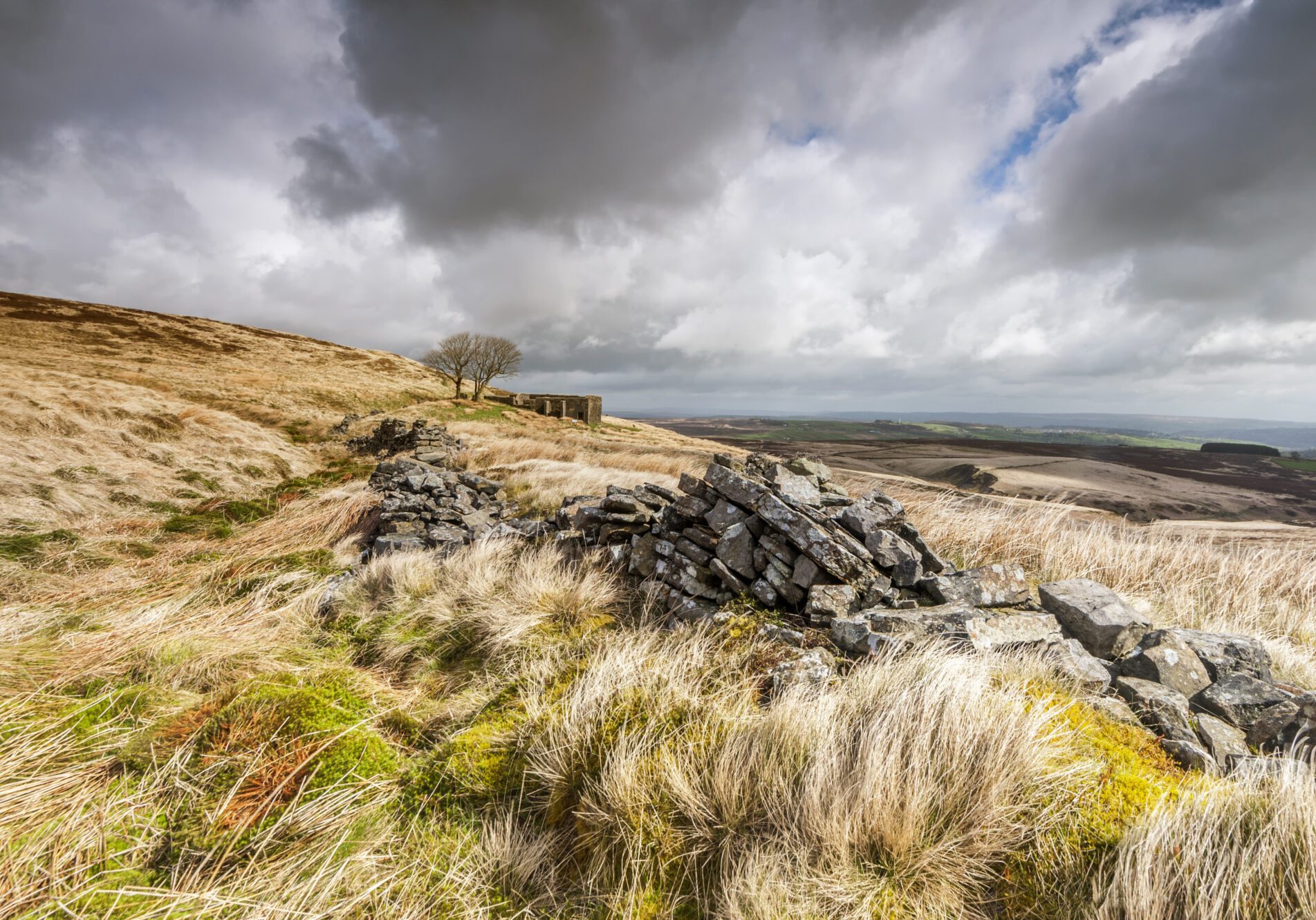
The Written Landscape
by Marc Waddington
MARC WADDINGTON TAKES A LOOK AT HOW THE POETS AND WRITERS OF LANCASHIRE AND YORKSHIRE HAVE GRAPPLED WITH THEIR BLEAK, WILD SURROUNDINGS...
The landscape of the East Lancashire and West Yorkshire area is a force of nature. The moors, hills and valleys are rarely—if ever—out of sight. In towns such as Burnley, the redundant factories, chimney stacks and mill-sheds are often said to dominate the skyline, but it can’t be denied that the uneven and looming horizon sits high above them all.
The view from the hills offers a stark reminder of how relatively little of the land was overrun by industry; how small and insignificant a town can seem in relation to the vastness of the undulating greens and browns of the valley walls. The hills seem brooding, silent, have seen everything come and go, but seem unmoved by it all. Such is, for me and for many, their attraction.
Even if the hills appear slumbering and silent, a long walk upon them will be, for most of us, a strong and forceful reminder of the power that they possess; the gales that rush through the gorse and long grass and push against the trees are at times difficult to endure, and it’s easy to suspect a conspiracy between the wind and the steep, sheer edges of the cliffs and crags.
In the winter, the rains lash at hill walkers; in summer – as this last summer – we are banished from the moors in case broken glass or cigarette ends should send them into a fiery rage. In short, the landscape can often seem hostile and forbidding.
Understandably, the area’s wild countryside has inspired many poets and writers over the last two hundred years and beyond. Each has, in their own way, attempted to capture the barren, bleak, untamed terrain in verse or prose; to snare its wildlife with their words and paint evocative pictures of the ragged and rugged land. In the nineteenth century, poets and writers from other parts of the country began to write affectionately about their environments. Think of Wordsworth:
I wandered lonely as a cloud,
That floats on high o’er vales and hills,
When all at once I saw a crowd,
A host, of golden daffodils;
Beside the lake, beneath the trees
Fluttering and dancing in the breeze.
This kind of saccharine sentimentality is not easy to find reflected in the relationships of Lancashire and Yorkshire writers and poets with their surroundings. For example, Emily Bronte’s Wuthering Heights suggests a very different relationship.
On the opening page, Mr. Lockwood describes the landscape around Wuthering Heights as ‘a perfect misanthropist’s heaven’, an insightful, ironical opinion of the negative capabilities of this wilderness if ever one were needed. Throughout the novel, the bleak landscape is used to reflect and reinforce the torrid, wild love affair between Cathy and Heathcliff.
Understandably, many other poets have been moved to write of their experiences of this countryside, notably Mathew Arnold, whose ‘Haworth Churchyard’, written in homage to the deceased Charlotte Bronte, continues in the tradition of her description:
… but the church
Stands on the crest of the hill,
Lonely and bleak; – at its side,
The parsonage-house and the graves.
Lonely and bleak are undoubtedly two of the most fitting descriptions of this terrain, so if the landscape can impress such powerful human conditions as loneliness upon its churches and parsonages, what can it impress upon us?
Farms, fences, walls and bridges can make it seem like we have mastered the countryside, but how much of a hold does our environment have over us, our perceptions and emotions?
It’s almost as if a single step could be a journey of a thousand miles in itself.
In June this year I had a visit from a friend whose home on the flat plains of the midlands is a far cry from the lumpy, bumpy terrain of this part of the world. One blistering afternoon we set out (foolishly, as the heat would remind us) on a walk across the hills near my home in Burnley’s Harle Syke area.
I’ve often marvelled at the fact that so close to a nondescript little village of semis, Spar shops and pubs sits such a wild and expressive terrain as that which follows on the journey through Lane Bottom and out towards the Calder valley. It’s almost as if a single step could be a journey of a thousand miles in itself. My friend, on taking this walk with me, could no more comprehend the contrast than I.
As my friend is a poet, it seemed to me that it might be unfair to make him endure the pubs of Burnley. That may have been presumptive of me, for though a poet, he is not the introverted, serious type, so he might well have appreciated that excursion and the colourful characters it would have revealed to us. However, as we clambered over the hills it was he that was looking at the flowers and shrubs and trying to remember apt quotations; he that found amusement in the hopping crickets and frantic flies.
For my part, I was quiet, subdued by the landscape and vast emptiness. It’s his opinion that I am the introverted, serious one, but I don’t know what he means. Still, if his opinion is true, does it mean that I was coined by the landscape; that I’m a product of these sparse hills and valleys?
Perhaps, because when we’d stood at the summit of Harle Syke looking down on Burnley and he commented on the size of the hills on all sides, and I had told him something I had once heard said of them—that they ‘keep them all out and keep them all in’—he had laughed knowingly. When I’d asked him what was so funny, he had looked at me and merely said, ‘Nothing,’ but I think I knew what he was getting at.
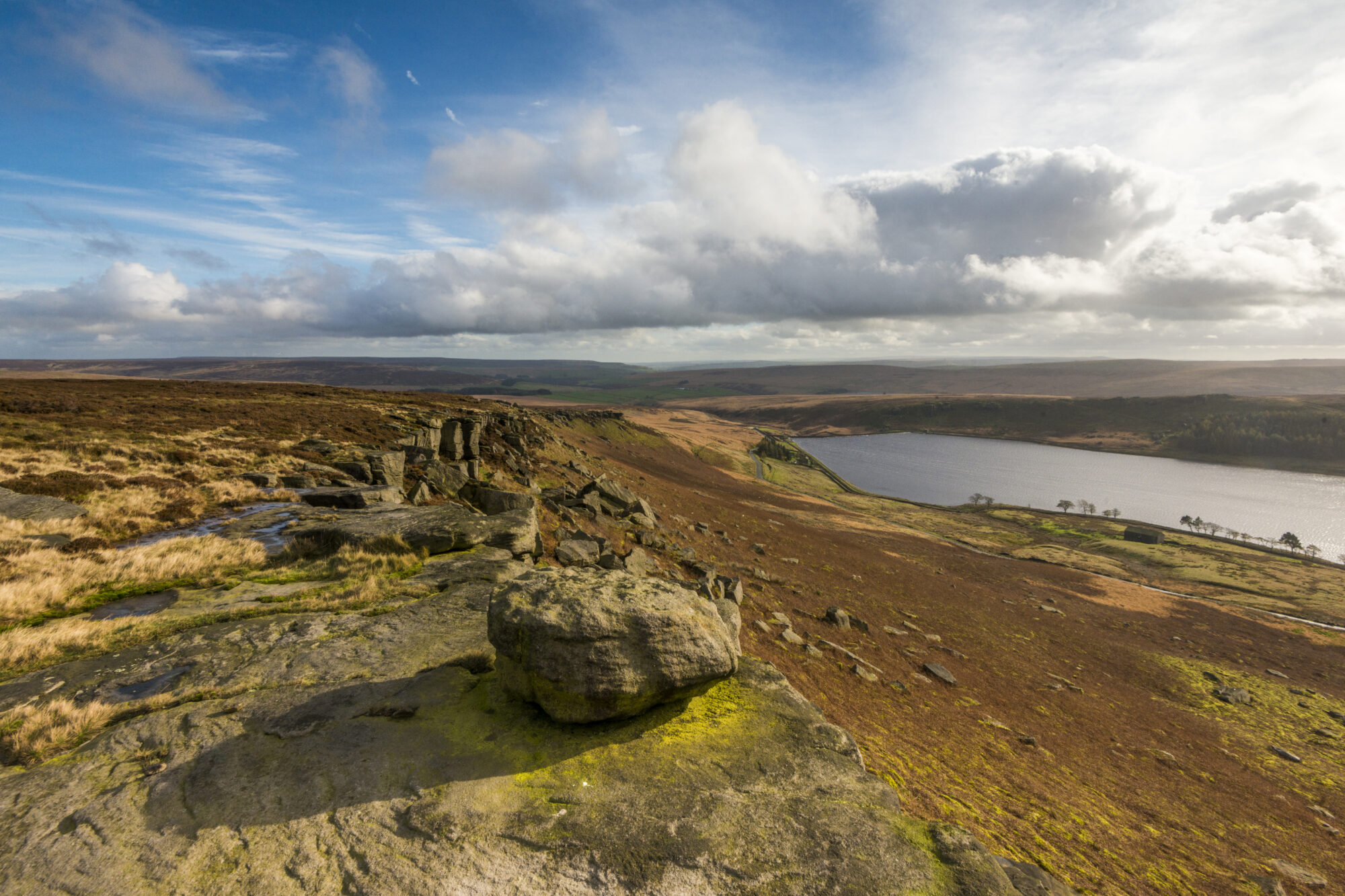 At Widdop reservoir—by which his breath was understandably taken away—we stood and stared into the cool water. The sun was bearing down on us, and there was no shade anywhere to protect us from its relentlessness. We sat down in the long, dry grass and wondered what to do. We had no water, the cigarettes had run out, and in the discomfort we were beginning to get on each others’ nerves. As though the landscape was influencing our thoughts, we were running out of things to say; the bleak terrain all around us seemed to be commanding silence and solitude in return for our very being there; almost, one might say, that it should be revered, insignificant as we were in contrast to it. But, I remembered something, and determined not to be beaten, I said we should march on. I had a literary surprise for him that I knew would bring him some morbid cheer.
At Widdop reservoir—by which his breath was understandably taken away—we stood and stared into the cool water. The sun was bearing down on us, and there was no shade anywhere to protect us from its relentlessness. We sat down in the long, dry grass and wondered what to do. We had no water, the cigarettes had run out, and in the discomfort we were beginning to get on each others’ nerves. As though the landscape was influencing our thoughts, we were running out of things to say; the bleak terrain all around us seemed to be commanding silence and solitude in return for our very being there; almost, one might say, that it should be revered, insignificant as we were in contrast to it. But, I remembered something, and determined not to be beaten, I said we should march on. I had a literary surprise for him that I knew would bring him some morbid cheer.
‘Sylvia Plath? Go away,’ he told me as we walked towards Heptonstall. When, at Widdop, I had told him (and being so engrossed in the landscape it had almost slipped my mind) that Sylvia Plath, late American poet and once wife of the late Yorkshire poet Ted Hughes, was buried in a tiny village a few miles away, he refused to believe me. A couple of years ago, when we were at university, he had gone on like a broken record about her, so we walked down the cobbled, narrow streets of Heptonstall village and to its cemetery, overgrown and under-maintained, where she lay.
- Sylvia Plath
- Sylvia Plath’s grave in Heptonstall
For a poet whose life and stormy relationship with Hughes—followed by her suicide in 1963—is immortalised in print and on screen, her grave is simple and unassuming. There is little to indicate, apart from the trinkets and folded notes left by her admirers, that hers is not just an ordinary grave. Its inscription, ‘Even amidst fierce flames the Golden Lotus can be planted’, doesn’t at first seem to really say anything about the tragic young woman buried before us. ‘Why didn’t they bury her in America?’ my friend asked me. I didn’t really have an answer, but I hazarded a guess that it was Hughes’ decision.
After all, Hughes himself was born in the sleepy wool and textile town of Mytholmroyd, and he and Plath lived together for a spell on the outskirts of Heptonstall. Both poets—Hughes particularly—were deeply affected by the landscape of the barren countryside, and on moving to the area, Plath too was moved to write of it herself, fittingly in homage to Bronte’s Wuthering Heights. Her poem ‘Two Views of Withers’, for example, includes the lines:
Help over hill
And hill, and through peaty water.
I found bare moor,
A colourless weather,
And the house of Eros,
Low-lintelled, no palace.
Hughes himself, though captivated by the surrounding countryside, was critical of the steep valleys in which he had lived his early life. Hughes said of West Yorkshire that ‘everything was slightly unpleasant. Where nothing quite escapes into happiness.’ For his relationship with Plath, the area’s scenery would prove the perfect, tragic backdrop.

Heptonstall, Calderdale
He had written of the women of the area that they were ‘as bleak as Sunday rose gardens,’ and of its men and their ‘cowed, shaven souls.’ These descriptions, honest though they were, reinforce the idea of the power of the land over its inhabitants, whose struggle for survival in the dying industrial age echoed the struggle of the wildlife that continues to scratch out its own survival on the desolate hills and moors.
Leaving the cemetery, and beginning on our long journey back to Burnley, my friend was quiet, anxious as we both were to get back before the night fell. As we trudged along the long and winding road, the sun began to bow out. The landscape was changing in the dying light; more forbidding, uninhabited and unfrequented looked the topography. We made our way quietly through the landscape, but to my mind the scenery, although itself silent, seemed to be shouting out loud of something. If the land wrote poetry, I wondered, what would it say of itself? Would it see itself as a force of nature; a powerful, sprawling domain of wind and rain, or, deep down, would it concede to its bleakness, its emptiness, and its vulnerability?
Standing on the crest of a hill, looking back over the deserted land, I asked my friend if he could understand why the tragic, lonely journey of Sylvia Plath should end here. ‘Hmm,’ he said, almost struck mute by the view, ‘yes, I can.’
NorthernLife Sept/Oct 22

